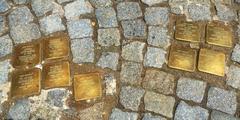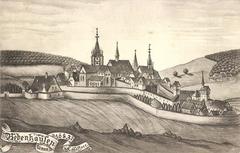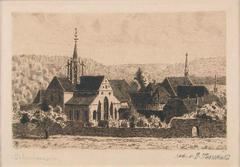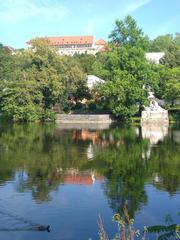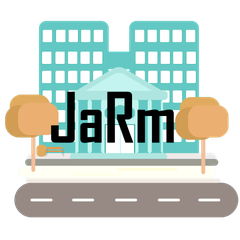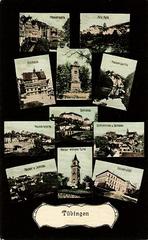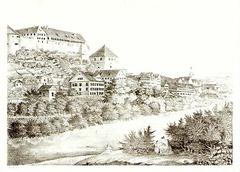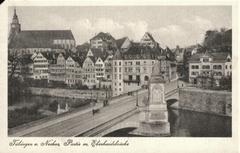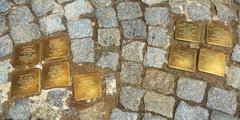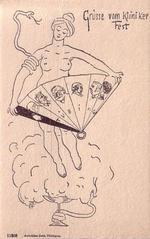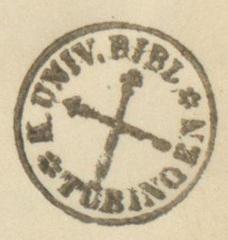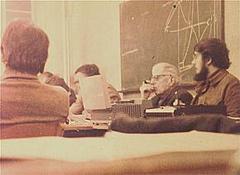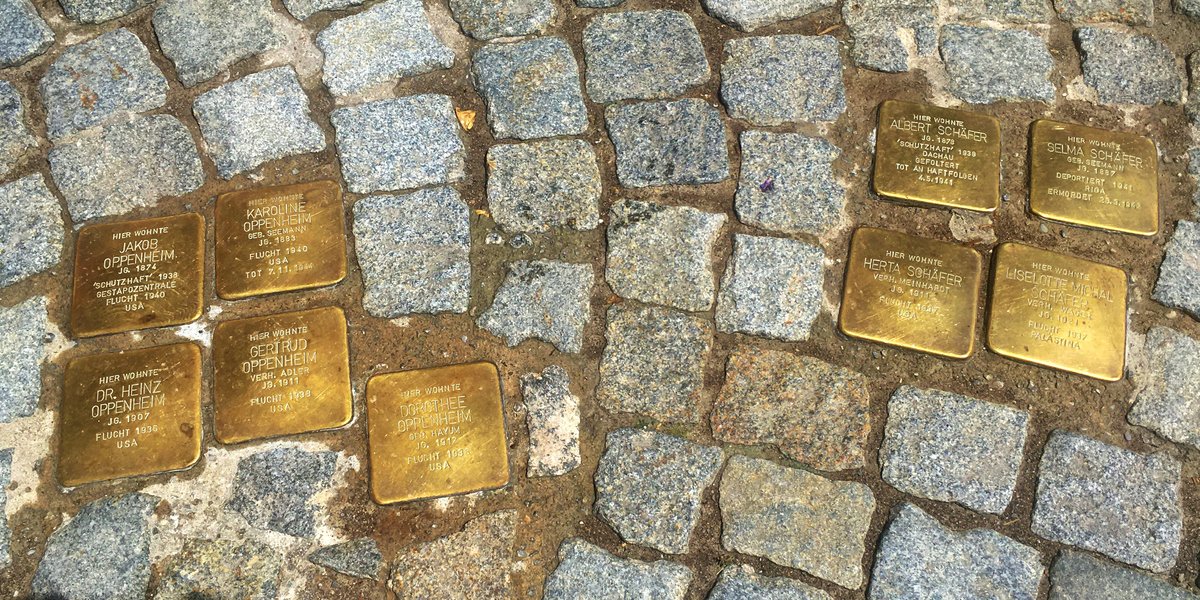
Stolperstein Jakob Oppenheim Tübingen: Visiting Hours, Tickets, and Historical Significance
Date: 14/06/2025
Introduction
Tübingen, a historic university town in southwestern Germany, is home to numerous Stolpersteine—small brass plaques embedded in city sidewalks that memorialize victims of Nazi persecution. Among these, the Stolperstein dedicated to Jakob Oppenheim stands as a powerful tribute to both an individual and the broader Jewish community erased during the Holocaust. This memorial, located at the corner of Holzmarkt and Neue Straße, invites residents and visitors alike to pause, reflect, and remember.
This article provides comprehensive guidance on the Jakob Oppenheim Stolperstein: its historical context, significance, precise location, visiting information, and tips for meaningful engagement. You’ll also discover how this memorial fits within Tübingen’s larger landscape of Jewish heritage, and how to enrich your visit with related sites and resources.
(stolpersteine.eu; fabriziomusacchio.com)
Contents
- Overview: Why Visit the Jakob Oppenheim Stolperstein?
- Historical Background of the Stolpersteine Project
- Origins and Philosophy
- Expansion and Scope
- Stolpersteine in Tübingen
- Community Involvement and Local Significance
- The Story of Jakob Oppenheim
- Visiting Information
- Location and Accessibility
- Visiting Hours and Admission
- Visitor Etiquette and Tips
- Tours and Educational Resources
- Complementary Sites and Attractions
- Frequently Asked Questions (FAQ)
- Conclusion: Remembrance and Engagement
- References and Further Reading
Why Visit the Jakob Oppenheim Stolperstein in Tübingen?
Stolpersteine—meaning “stumbling stones”—provide a unique and deeply personal way to confront the history of Nazi persecution. Conceived by artist Gunter Demnig in the 1990s, the project aims to restore individuality to victims by placing memorials at their last freely chosen addresses. In Tübingen, over 140 Stolpersteine commemorate Jewish residents and other victims, with the Jakob Oppenheim Stolperstein serving as both a personal and collective site of remembrance.
Visiting this site is not just a historical act, but a meaningful gesture of respect and engagement with the city’s past.
(stolpersteine.eu; Tüpedia: Stolpersteine)
Historical Background of the Stolpersteine Project
Origins and Philosophy
The Stolpersteine project began in Germany in 1992, inspired by Demnig’s desire to localize and personalize Holocaust remembrance. Each brass plaque is inscribed with the name, birthdate, fate, and, if known, the date and place of death of a victim of Nazi oppression. By embedding these stones in everyday walkways, the project transforms city streets into living memorials, prompting passersby to pause and reflect.
The philosophy is simple but profound: remembrance should be local, personal, and accessible. Stolpersteine democratize memory, ensuring victims are recognized not as abstract statistics but as neighbors and community members.
(fabriziomusacchio.com; pragueviews.com)
Expansion and Scope
Since the first stone was laid in Cologne in 1996, the project has expanded dramatically. As of 2025, more than 100,000 Stolpersteine have been installed in over 1,800 cities across Europe, making it the world’s largest decentralized Holocaust memorial. The stones commemorate Jews, Sinti and Roma, disabled individuals, political prisoners, LGBTQ+ people, Jehovah’s Witnesses, and others targeted by the Nazis.
(germany.info; stolpersteine.eu)
Stolpersteine in Tübingen
Community Involvement and Local Significance
Tübingen joined the Stolpersteine project in 2011, with installations continuing through 2024. The city’s Stolpersteine honor nearly all known Jewish residents persecuted or murdered during the Nazi era. Local schools, historians, and volunteers have played a central role in researching biographies and organizing installation ceremonies, making remembrance a community effort.
The Story of Jakob Oppenheim
Jakob Oppenheim was a prominent Jewish merchant in early 20th-century Tübingen. His life, like those of many others, was tragically disrupted by the Nazi regime. The Stolperstein at Holzmarkt and Neue Straße marks his last freely chosen residence, restoring his name and story to public memory.
The stone’s presence is a daily invitation to reflect on the individuals behind historical events and to acknowledge the long-lasting impact of intolerance and violence.
(stolpersteine.eu; Tüpedia: Stolpersteine)
Visiting Information
Location and Accessibility
- Address: Intersection of Holzmarkt and Neue Straße, 72070 Tübingen, Germany
- How to Find: Use the interactive Stolpersteine map to pinpoint Jakob Oppenheim’s stone.
- Accessibility: The stone is embedded in the sidewalk and generally accessible to all visitors, though some city streets may have uneven surfaces.
Visiting Hours and Admission
- Hours: Open and accessible 24/7, year-round.
- Admission: Free. No tickets required.
Visitor Etiquette and Tips
- Respect: Pause, read the inscription, and reflect quietly. Avoid stepping directly on the stone.
- Cleaning Tradition: Many visitors gently polish the brass with a soft cloth as a sign of respect.
- Photography: Discreet photos are allowed; please be mindful of pedestrian traffic and resident privacy.
- Leave a Token: Placing a small stone or flower on the memorial is a traditional gesture of remembrance.
Tours and Educational Resources
- Guided Tours: Local organizations and schools sometimes offer guided Stolperstein walks. Check with the Tübingen Tourist Information Center or Förderverein für jüdische Kultur in Tübingen.
- Self-Guided Tours: Use the Stolpersteine Guide app or the interactive map for self-guided exploration.
- Educational Materials: Further information and biographies are available online and at the City Museum Tübingen.
Complementary Sites and Attractions
While in Tübingen, consider exploring additional sites that deepen your understanding of the city’s Jewish history:
- Judengasse: The site of the medieval Jewish community, marked by a commemorative plaque. Open at all times.
- Former Synagogue Location: Learn about local Jewish life at the nearby City Museum.
- Market Square (Marktplatz): A central hub, close to several memorials.
- St. George’s Church: Historic Gothic church near the Stolperstein.
- Tübingen Castle and Old Town: Offers panoramic views and further historical context.
(museum.tuebingen.de; Tübingen Tourist Information Center)
Frequently Asked Questions (FAQ)
Q: What are the visiting hours for the Jakob Oppenheim Stolperstein?
A: The Stolperstein is accessible at all times, year-round.
Q: Is there an entry fee or ticket required?
A: No, it is free and open to the public.
Q: Are guided tours available?
A: Yes, see local tourism resources or community organizations for schedules.
Q: Is the site accessible for people with disabilities?
A: Most Stolpersteine are accessible, though some sidewalks may be uneven.
Q: Can I participate in commemorative events?
A: Yes, public ceremonies are often held on Holocaust Remembrance Day and installation anniversaries. Visitors are welcome.
Conclusion: Remembrance and Engagement
The Jakob Oppenheim Stolperstein is more than a memorial; it is a call to remembrance and action. By visiting, reflecting, and sharing these stories, you join a community dedicated to honoring victims of the Holocaust and promoting historical awareness.
Pair your visit with other heritage sites, make use of digital resources for deeper engagement, and participate in local events when possible. Your presence helps ensure that the past is not forgotten and that the lessons of history remain alive for future generations.
References and Further Reading
- https://www.fabriziomusacchio.com/weekend_stories/told/2024/2024-01-25-stolpersteine/
- https://www.stolpersteine.eu/en/information/frequently-asked-questions
- https://www.tuepedia.de/wiki/Stolpersteine
- https://www.verein-juedische-kultur-tuebingen.de/?page_id=761
- https://museum.tuebingen.de
- https://www.tuebingen-info.de
- https://www.germany.info/us-en/welcome/03-jewish-life-germany/1308424-1308424
- https://pragueviews.com/stolpersteine-stumbling-stones/
- https://stolpersteine-guide.de/
